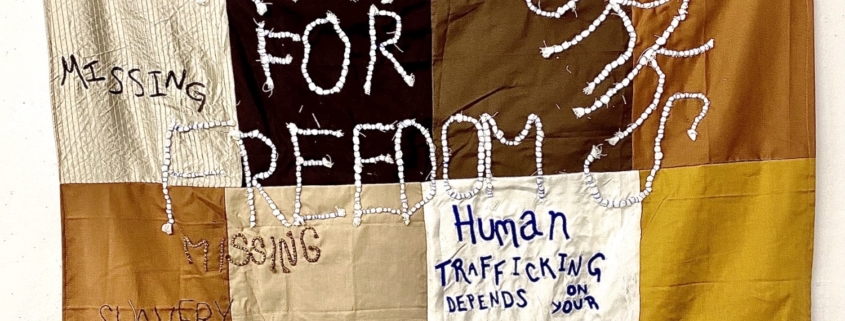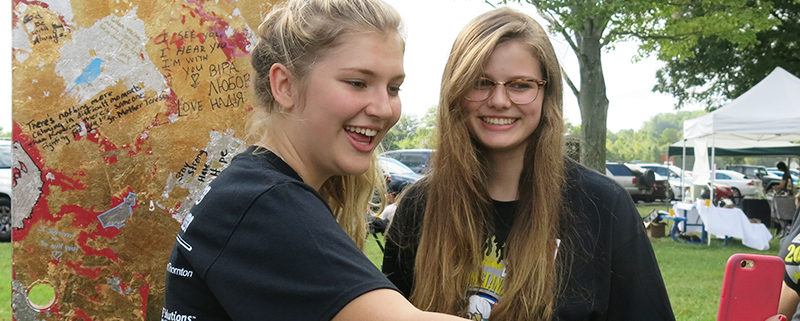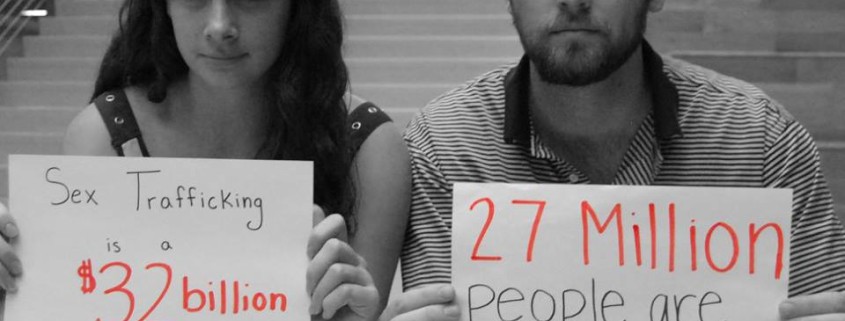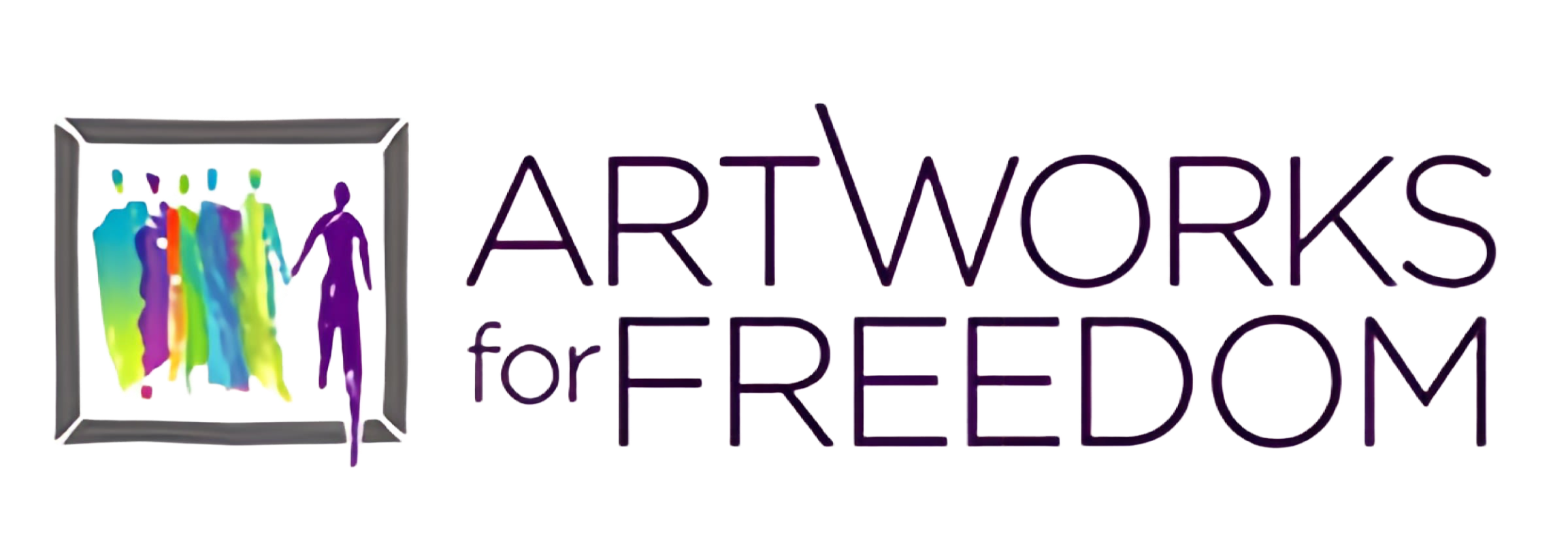Artist Spotlight: Samantha Sponer
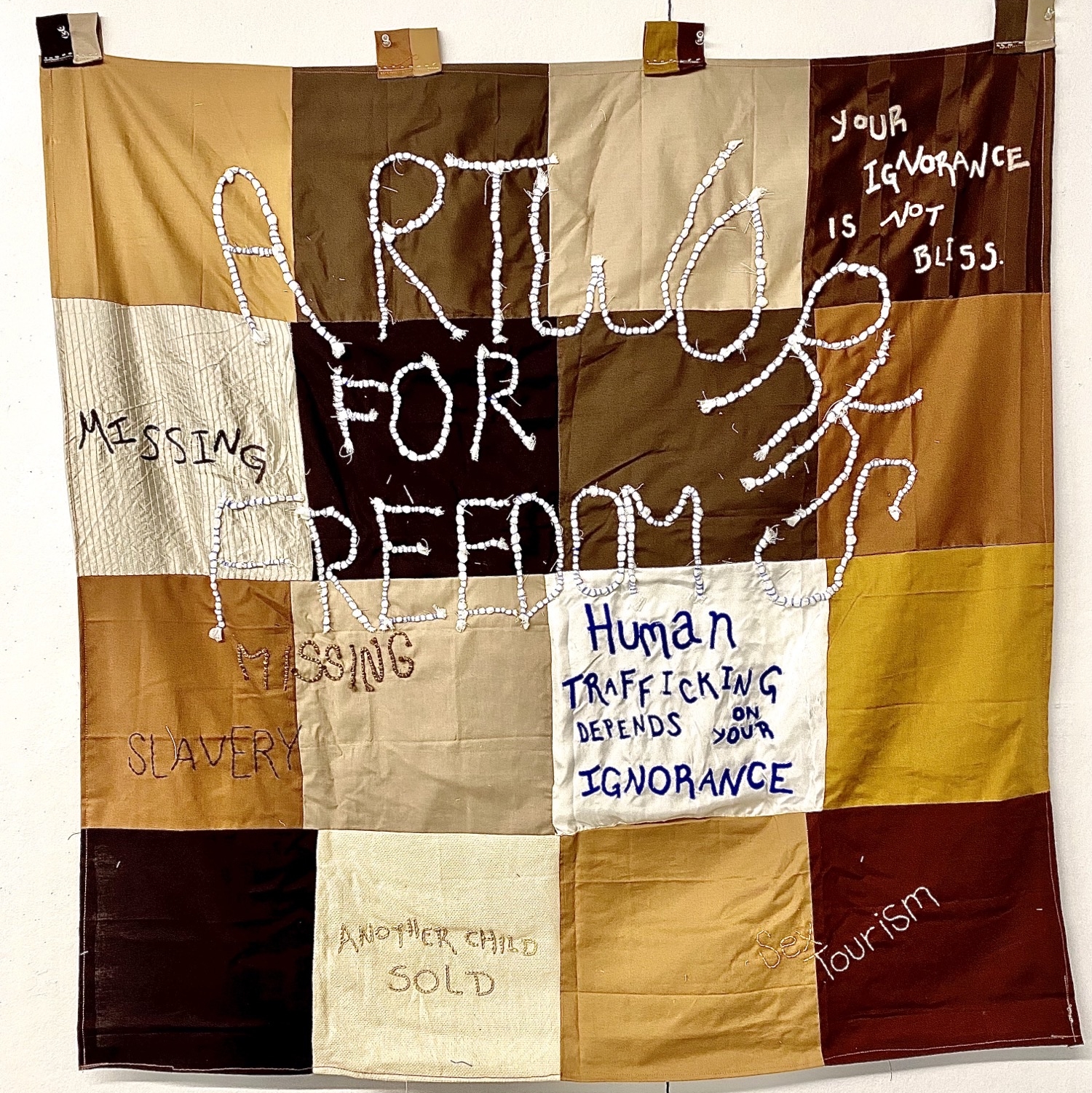
As an interdisciplinary artist with a background in textiles, I designed the ArtWorks for Freedom banner as a tribute to protest movements in the present and the past. The act of sewing has long been considered a craft instead of a fine art, and the medium itself has a long history of resistance and awareness.
The idea to make a banner in a quilt-like fashion seemed natural; some believe that coded quilts helped escaped slaves reach freedom along the Underground Railroad. The concept of codes being hidden in plain sight, which these quilts embodied, connects similarly to the issue of human trafficking and its solution.
The Banner
I designed the banner in a way that it could also be used as a curtain, with the action of pulling in and out being very important to me as human trafficking is very much an issue one could choose to pay attention to or not. In the domestic sense, I also wanted the viewer to be reminded of the way slaves would be used in a variety of contexts, such as for sex or for labor. Indeed, this wonderful organization, ArtWorks for Freedom, also deserves a banner, with their name written boldly through the center.
Surrounding the title are words and phrases associated with human trafficking and the movement for education and awareness. Human trafficking is often invisible to the naked eye, though once one starts to pay attention suddenly they words missing and sex tourism can’t go unnoticed. It was important to me as well to use multicolored squares referencing a variety of skin tones to tell the audience that this issue is not exclusive to a certain race — it affects any and all without discrimination. Having the words stretch across the borders of each square also serves to represent that this is as much an international crisis as it is a local one.
The Performance
As a part of this project, I conducted a performance in order to hear and feel from my community. I sat unannounced in the atrium of my university, quietly embroidering across the curtain with two posters close to me: one with more information about human trafficking and ArtWorks for Freedom, the other asking people what they know about the issue. As expected, few approached me, but the performance was mostly to practice the concept of “being with” as outlined by Erin L. McCutcheon and Corrie Boudreaux.
Community collaboration, though a bit subverted in this way, comes across not only as a quieter form of protest but also as a demonstration of solidarity. Some don’t know much about human trafficking, while others have had previous experience or knowledge here — this performance spoke to both groups. For about six hours, I sat quietly embroidering the title ArtWorks for Freedom while students and faculty alike passed by, glanced at, or interacted with the piece. I believe doing this performance before the exhibition itself helped foot traffic and appreciation when it was officially unveiled.
The multicolored squares reference a variety of skin tones to tell the audience that human trafficking is not exclusive to a certain race — it affects any and all without discrimination. Having the words stretch across the borders of each square also serves to represent that this is as much an international crisis as it is a local one.
The installation of the banner and posters hung again in the atrium of my university’s art school for two weeks in March 2022. With a nearby table holding informational brochures about ArtWorks for Freedom, I again added the informational poster along with the other one asking for people’s knowledge on the issue. Overall, this was successful due to the brochures taken and responses recorded, though due to COVID-19 the audience was limited to students and faculty at the School of the Museum of Fine Arts at Tufts University (guests are not permitted in the building). I hope to continue to exhibit this curtain in more public spaces for a broader audience.
I’m so grateful for ArtWorks for Freedom and its dedication to both the arts and the fight against human trafficking. I’ve always thought that an organization championing art and social issues should exist, and thanks to Kay Chernush we have just that. I only wish that the final exhibit could have been enjoyed by Kay, but more importantly I hope she is resting in peace. Many thanks to Christina Bain and the Board of ArtWorks for Freedom for helping me realize this project.

